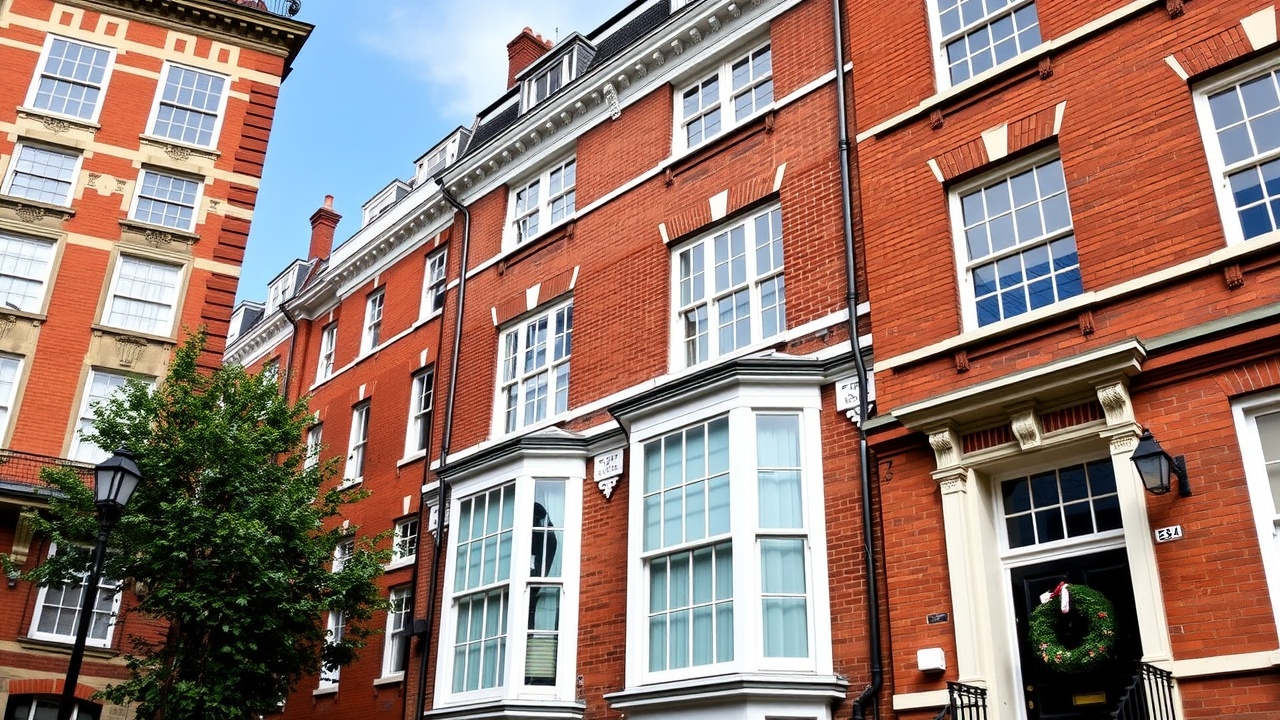
In the UK, people's savings amounts vary from one region to another
What is your nest egg worth in relation to those in your neighborhood?
It's crucial to set aside money for the future, preferably in a high-interest savings account, whether it's for emergencies or to help you achieve your financial objectives.
The amount that people have saved, however, varies greatly amongst the 12 main regions of the United Kingdom.
We examine average savings by region to determine where in the UK people save the most and where they fall short.
Which regions of the nation have the highest savings rates?
London has the highest average savings in the nation, according to Raisin UK data.
With about 9 million residents, the capital of the United Kingdom is by far the most densely populated area of the country.
The average amount saved in the capital is slightly less than 29,000, which is more than twice as much as the amount saved in the region with the second-highest average.
Both extremes of wealth reside in the capital, which is probably why London is at the top of the pack. One of the most significant financial centers in the world, the City of London is also home to many people living below the poverty line, despite the fact that its employees frequently earn the highest wages in the nation.
Because of this, the two extremes skew the average amount of savings that people in the capital have, particularly those who have large paychecks and save a significant portion of them.
To some extent, having larger savings is a necessity, even though it may appear that Londoners have more money to save simply because their incomes are higher.
The cost of living in the capital is notoriously high, so residents will probably need to keep more money in their emergency fund.
According to the Land Registry house price index, the average price of a home in the capital was 552,073 in March 2025, while the average monthly rent in London was 2,121 in April 2025, according to Zoopla.
According to Numbeo, the average monthly cost of living in London (not including rent) is about £1,000 for an individual and £3,700 for a family of four.
Having an emergency fund that at least covers three months' worth of essential expenses is advised, and since prices in the capital are significantly higher than those in other parts of the nation, Londoners' savings must be significantly larger.
The startling disparity between average savings in London and the rest of the nation, however, does suggest that many people in the capital earn more money and can thus save more.
According to Raisin UK, only 1 in 48 Londoners have no savings, and only 6 out of 67 have 100 or less. The situation in other regions of the nation is different.
West Midlands has the second-highest savings in the UK, with an average savings pot of 13,318. With an average of 10,022 hidden away, the North East comes in third.
In another piece, we examine average savings by age.
Where in the United Kingdom do people have the least amount of savings?
With only 6,438 savings on average, the East Midlands is the UK region with the lowest savings.
According to Hargreaves Lansdown, the average household spends 2,111 on necessities each month, so their emergency fund should be at least 6,333. This amount is hardly enough to cover three months' worth of expenses.
In the region, a large percentage of people (8 out of 75) have no savings, and 12 out of 5 have only £100 or less saved.
According to the ONS, the average weekly income in the East Midlands in 2024 was 684, which equates to 35,568 annually. This is less than the 37,430 median gross yearly salary for full-time workers in the UK.
It might be more difficult for residents of the area to put some of their money into a savings account if their incomes are below average.
The average monthly rent in the East Midlands is 877, which is less than the average for much of the nation, according to the ONS. On the other hand, the Land Registry house price index indicates that the average cost of a home in the area is 243,973.
Numbeo does not offer data on the cost of living for the entire region, but it does offer figures for Leicester, the largest city in the East Midlands. There, the average monthly cost of living (not including rent) is 760 for an individual and 2,604 for a family of four.
With an average of only 6,710 saved, Northern Ireland is the UK region with the second-lowest savings. The average savings in the South West, which ranks third, are 7,140.
Where in the United Kingdom do people have no savings at all?
Many individuals in the UK have no savings, which is by no means a good situation to be in.
In the UK, a greater percentage of people live in areas with no savings than in others.
According to research, 9 out of 10 people in Wales have nothing saved, 15 out of 15 have 100 or less, and 28 out of 79 have 1,000 or less. Wales residents are the most likely to have zero savings.
Eight out of 89 people in the Northeast do not have any savings, compared to 11 out of 11 who have 100 or less and 35 out of 56 who have 1,000 or less.
East Midlands residents have the third-highest percentage of people with no savings, in addition to having the lowest average savings in the nation. Meanwhile, 35 percent of residents have less than £1,000 in savings, and 12 to 50 percent have less than £100.
Below is a complete list of average savings and the percentage of users who have no savings.
As of May 2025, Raisin UK is the source.
Whatever the cause of your low savings, it's critical to take charge of your circumstances and establish sound money-saving practices so that you have some buffer against life's unforeseen events.
If you want to start saving, one of the best options available is to start investing in one of the top cash investment plans (ISAs) or savings accounts.
It might be worthwhile to consider investing if you already have enough readily accessible savings for an emergency fund in order to begin increasing your wealth. Opening an ISA for stocks and shares and familiarizing yourself with an easy-to-use investing platform are good places to start.
Being ready to invest for the long term (five years or more) is common advice when it comes to investing, as the value of your investments can fluctuate.














Leave a comment on: What is the average savings by area in the United Kingdom?